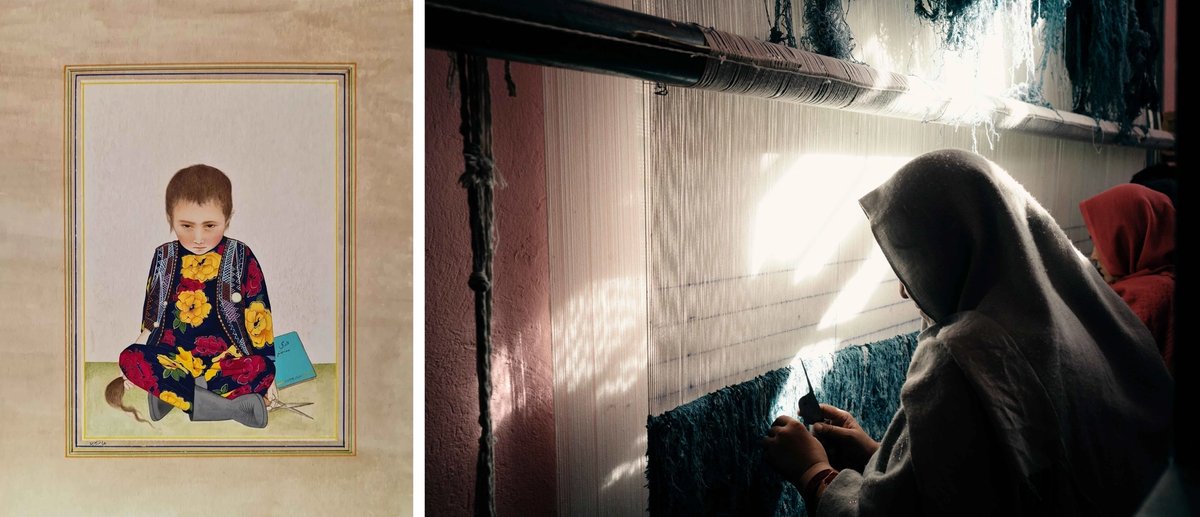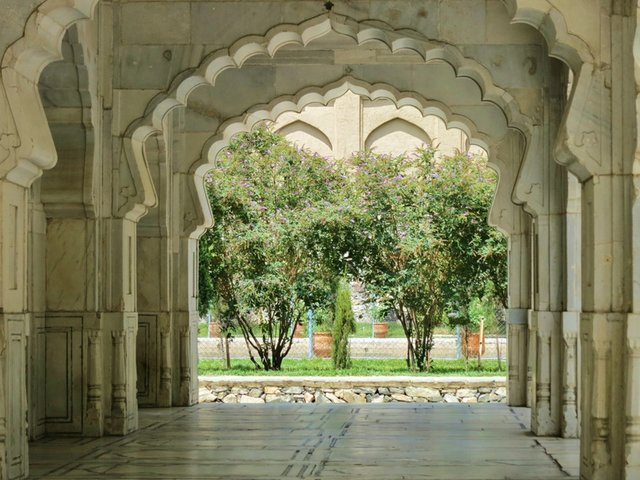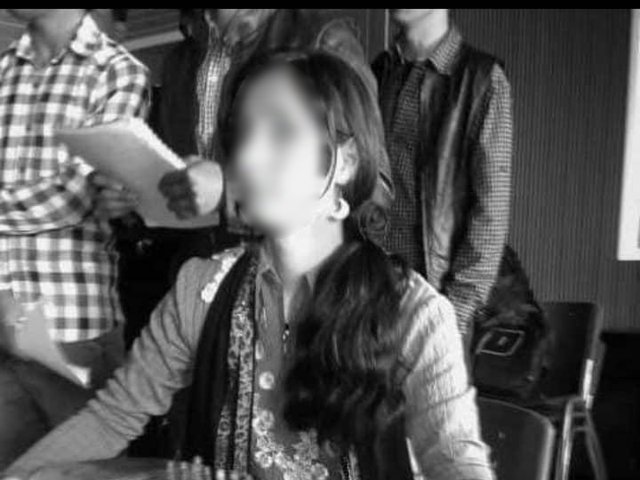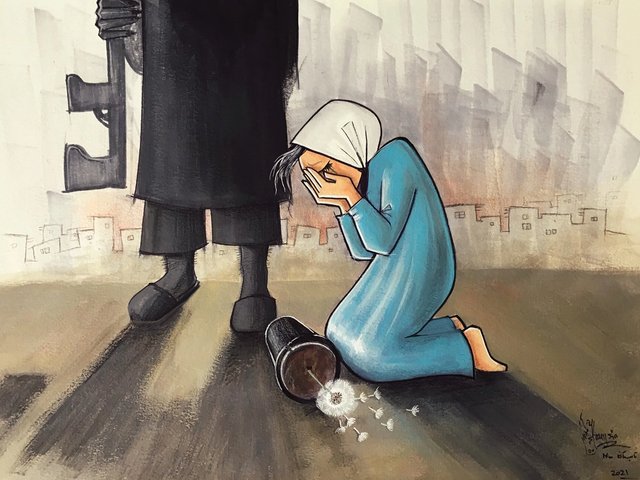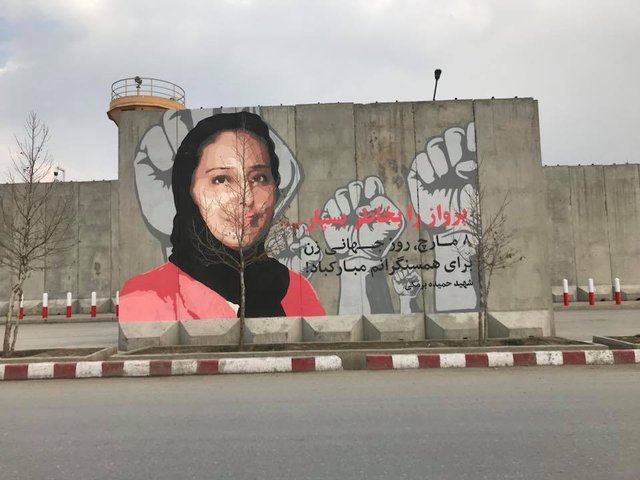Art has always been a lifeline for Afghan women like Alina Gawhary. Born in Kabul in 2004, she came to taste a life that has since been outlawed. “Painting was my childhood passion”, Gawhary says. “I wanted to show that girls could do everything.”
Growing up in a deeply traditional society, riven with insecurity, Gawhary and others seized opportunities to study art. They began to see it as a way of expressing what it was like to grow up as girls in Afghanistan. “I noticed that music is banned for girls, so I painted a woman in a burqa with a guitar,” she explains. “I wanted to show that even though we might have all these problems, we can still play music.”
All that changed in 2021, when the Taliban marched into Kabul and inaugurated the country’s second ‘Islamic Emirate’. They proceeded to undo the gains that Afghan women had made over 20 years of blood-soaked ‘development’; first offices and then universities, schools, nurseries and even public parks were closed to women, as the Taliban imposed an extreme interpretation of Islamic law on 40 million Afghans. Horizons that took years to broaden suddenly disappeared altogether. “I felt like I had died,” Alina says. “I thought it would be like what happened to my mother [in the 1990s]: all through my childhood, I felt that if my mother hadn’t been uneducated, her life would have been different; she could have been independent.”
Today, four years after the Taliban takeover, Afghan women have clung to their independence and creativity. Inside and outside the country, they have found ways to express themselves through art.
Gawhary was luckier than most, since she found a scholarship to go to art school in Belfast in 2024. But those inside Afghanistan have also found an outlet, thanks in part to the UK-based NGO Turquoise Mountain, which has worked with women carpet weavers in Bamiyan, in central Afghanistan, for more than a decade.
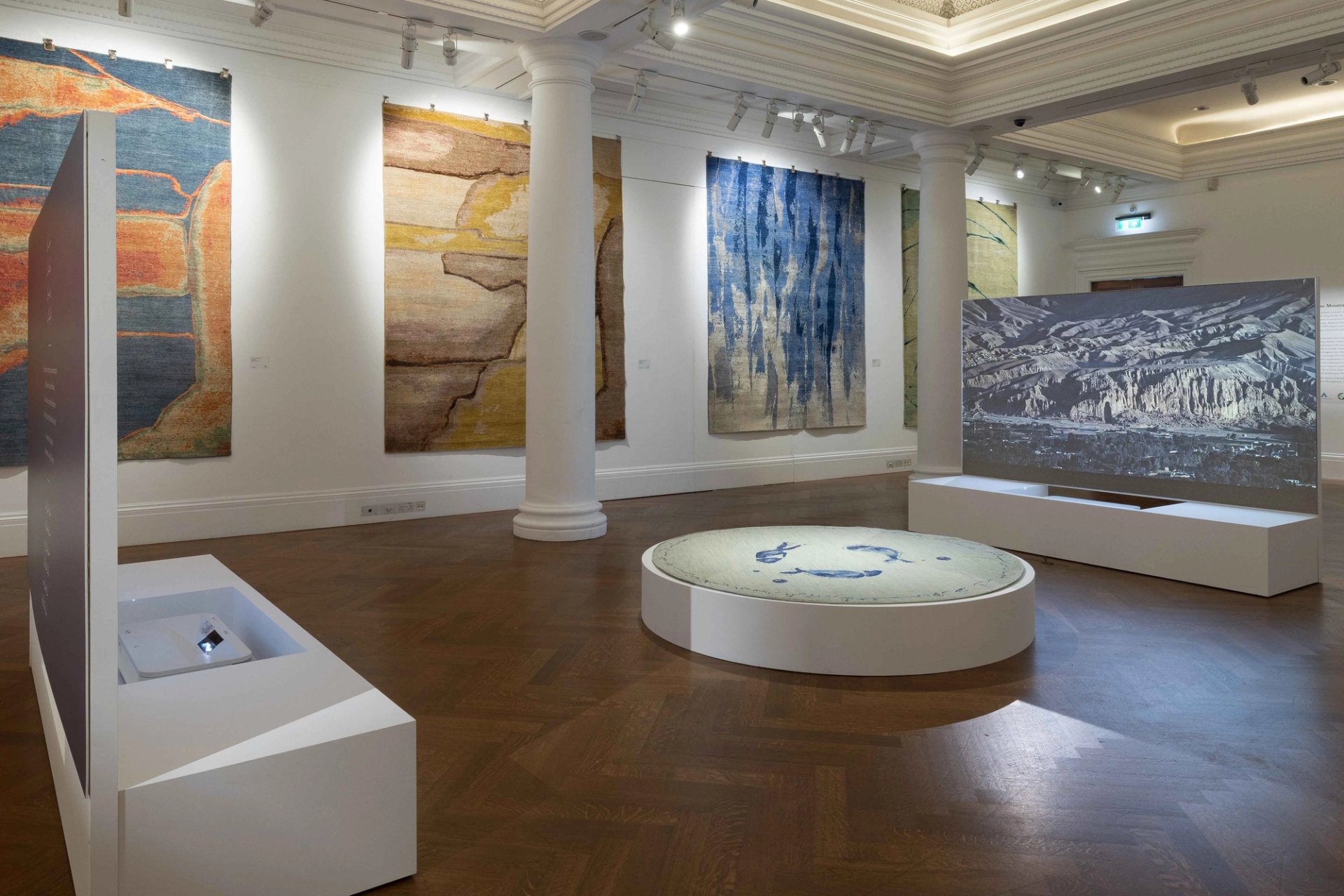
An installation view of the Weaving Poems at Sotheby’s in London
Courtesy of Sotheby’s
Set amid the grandiose sweep of some of the most dramatic mountains in the world, Bamiyan is home to two monumental Gandharan Buddhas and the Hazara community, which is divided by ethnicity and religion from the Pashtun Taliban. Under the last Taliban regime, the Buddhas were destroyed and the Hazaras massacred; this time, there has been less violence, but the Hazaras remain marginalised; Hazara women, under the Taliban, doubly so.
Turquoise Mountain has offered them a voice and an income, allowing them to produce carpets in village workshops nestled inside the mountain fastness they call home. The Afghan-British artist Maryam Omar found she had “collected quite a lot of poetry from the women we worked with,” which, though illiterate, they had memorised. “They tend to be about the reality of their lives,” she says. “Some were specifically about carpet weaving, but others were about what they saw out of the window when they were weaving: the mountains, the skies, the fish in the ponds.” Omar then designed “a visual reference for these poems” in watercolour, which she gave to the workshop to weave as carpets for Turquoise Mountain to sell internationally; all the profits go back to Bamiyan—to the women themselves or to buy supplies.
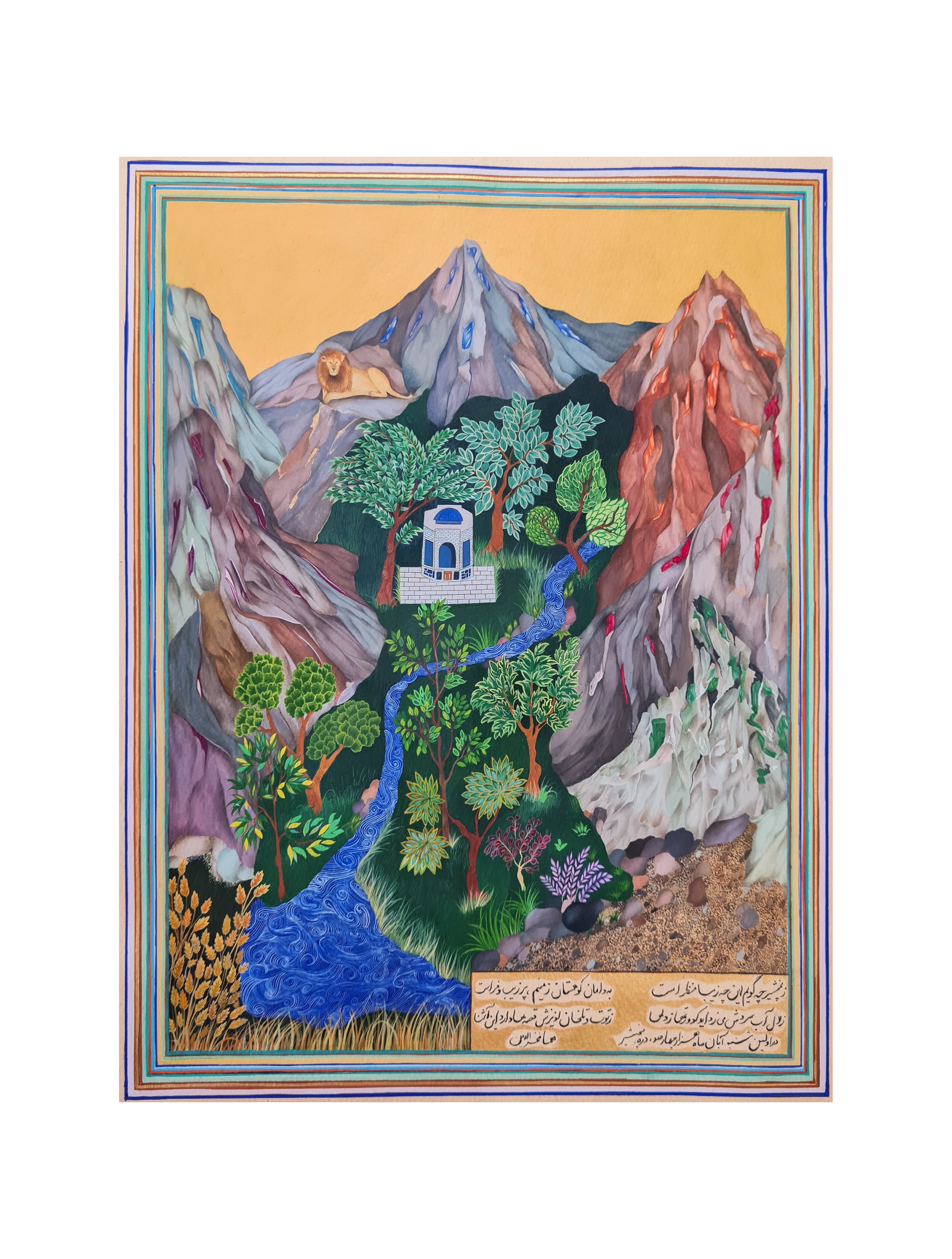
A miniature by Homa Fakhrodin
Courtesy of the artist
This summer, those carpets were displayed in the selling exhibition Weaving Poems at Sotheby’s in London (28 July-22 August). These abstract textiles have a kind of post-modern authenticity: they are made using traditional techniques, but they foreground their creators’ urge to express themselves through weaving. This is a radical departure from traditional Perso-Afghan carpets, in which you are more likely to see the name of the workshop’s male owner than that of the carpet’s immediate, female author. “We wanted the contribution of women to be at the centre, so we made it about the process of weaving,” Omar says. “It’s relevant to the artistic concerns of today but also to the heritage of Afghanistan.”
The Iran-based Afghan artist Homa Fakhrodin also reworks her heritage to express the concerns of today. She comes from Herat, which was for 1000 years an important cultural centre of the Persianate world; it is an exquisite city of tiled mosques, crumbling caravanserais and ancient bazaars, shaped by the poets and warlords of Western Afghanistan. After nearly 50 years of war, its historic sites are sorely battered.
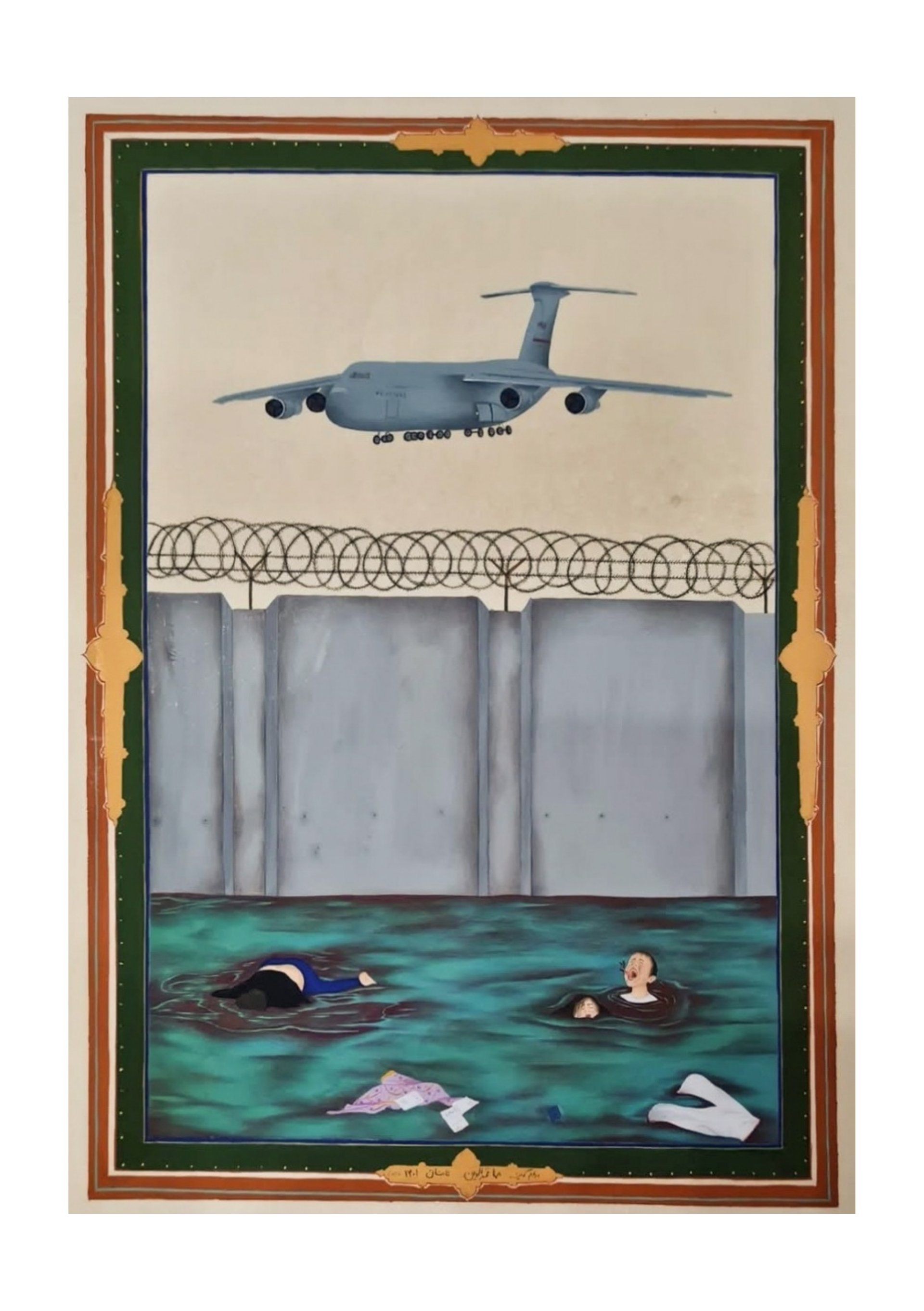
A miniature by Homa Fakhrodin
Courtesy of the artist
Inspired by the 15th-century Herati painter known as Behzad—a hero to artistic-minded Afghans—Fakhrodin threw herself into classical Persian miniature painting; those gleaming pages which unseen, idiosyncratic masters from the Bosphoros to Bengal had filled with shimmering colour and finely wrought character. It is an intricate, formulaic art form whose rules take as long to master as the handling of its millimetre-fine reed brushes. Having studied Western as well as Eastern art, Fakhrodin mixes influences in her contemporary miniatures—a fusion genre popularised internationally by contemporary artists like Shahzia Sikander.
Fakhrodin’s originality, however, lies in her work’s political salience: affected deeply by the Taliban takeover, she says her community’s “green, hopeful life” had turned to one of “hardship, trouble and forced migration”. After 15 August 2021, “for several days, I couldn’t do anything—I just drank tea and slept, but then I decided to depict this in my art.” Fakhrodin reworked in miniature the fall of Kabul: Afghan families outside the airport amid the wreckage of a bomb blast during the final, ignominious stages of the allied withdrawal. Other works deal with the plight of Afghan women: in one miniature, based on a photograph from Kiana Hayeri’s eye-opening series No Woman’s Land, a little girl stares out unnervingly, beside a schoolbook she will now have no use for.
These women have used art to assert themselves after four years of Taliban rule. Their work has married formal skill with the overwhelming desire to give expression to silent experience. “Art has changed my future”, says Gawhary, who, having taught other girls how to paint, knows it can change theirs too. It may yet.


